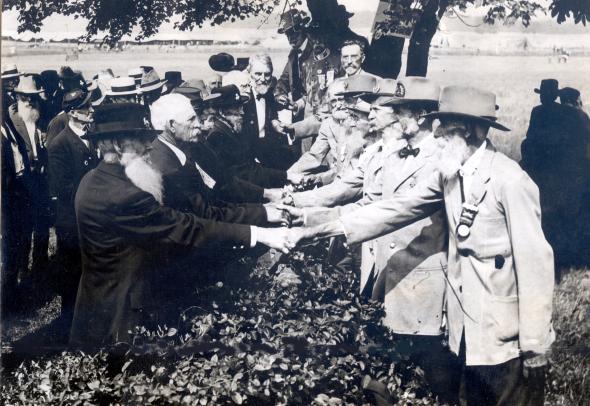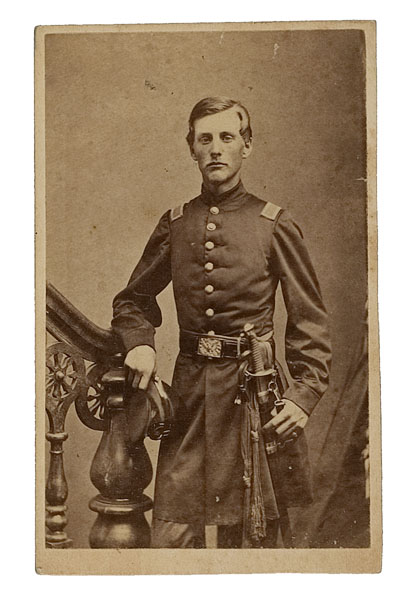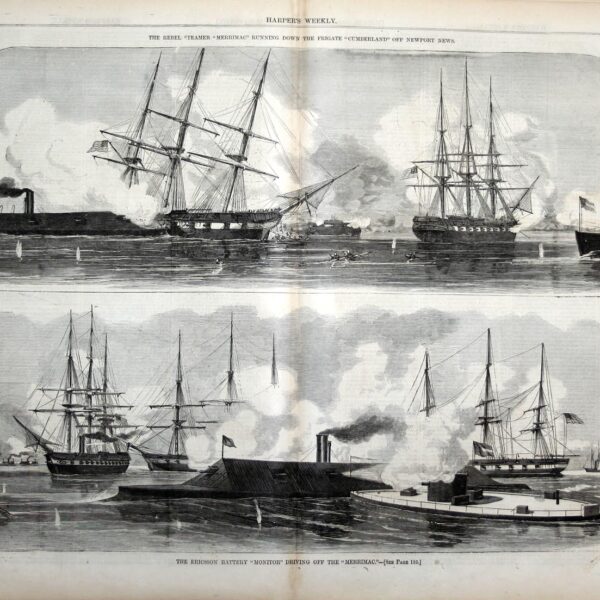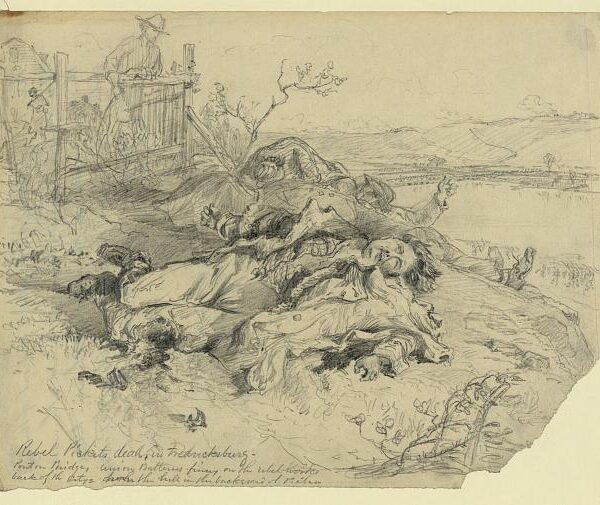“For hours the conflict lasted. Sometimes so near were the vessels they appeared in contact, and again three miles apart; but all the while vomiting forth seeming destruction with frightful rapidity, looking, as a gentleman near me observed, like very ‘hell cats.’” So noted Roland Greene Mitchell, one of the spectators crowding the beach outside Fortress Monroe, Virginia, on March 9, 1862, to watch the first-ever combat between ironclad vessels. The previous day, CSS Virginia, an ironclad ram constructed from the salvaged remains of the sunken frigate USS Merrimack, had engaged the Union’s wooden ships blockading the southern coast, destroying two.
On the 9th, Virginia met a more formidable opponent, USS Monitor, the U.S. Navy’s first commissioned ironclad warship, which had arrived overnight from its Brooklyn base. The hours-long fight between the ironclads, while inconclusive (neither ship inflicted serious damage on the other), was nevertheless significant—one that, as Mitchell observed, “has no precedent in history, and from which dates a new era in naval warfare.” As evidenced by the following paintings, some of them created within months of the engagement (and some more accurate than others), Mitchell was hardly alone in thinking the encounter noteworthy.

This 1862 lithograph published in Connecticut included the celebratory—and inaccurate—claim that “The Merrimac was crippled” by USS Monitor during the battle.
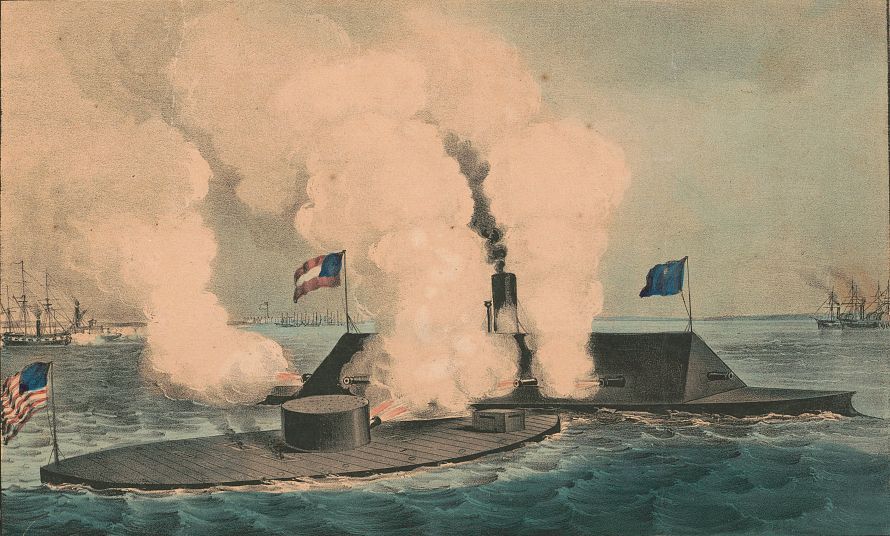
Currier & Ives’ 1862 lithograph of the “terrific combat” between the ironclads at Hampton Roads shows, per the title, the engagement “in which the little ‘Monitor’ whipped ‘Merrimac.’”
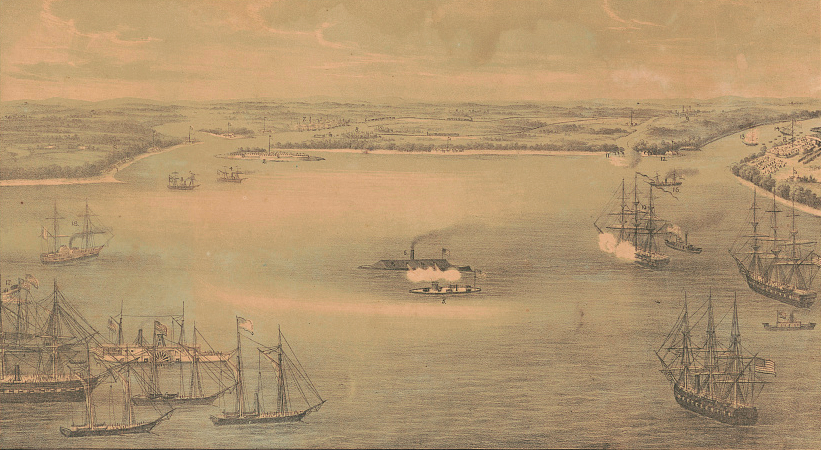
This 1862 lithograph, titled “The Naval Engagement Between the Merrimac and the Monitor at Hampton Roads,” was based on a sketch, made “on the spot” during the battle, by Charles Worret, a sergeant in the 20th New York Infantry.
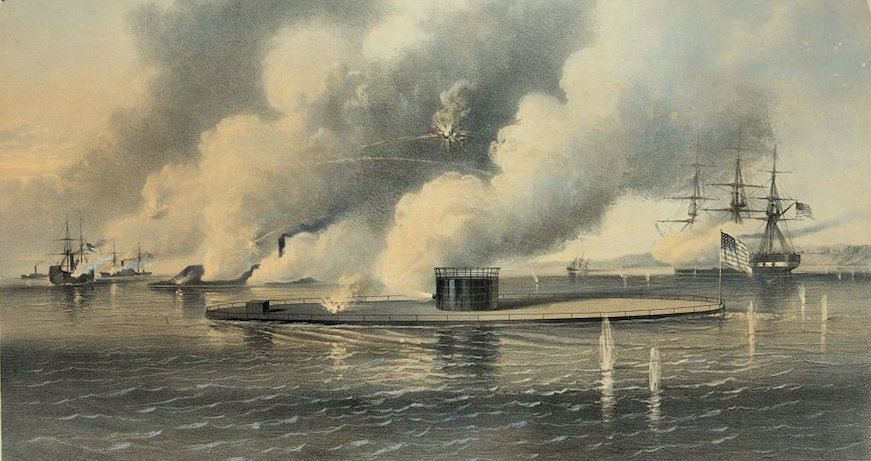
Published in New York City in 1862, USS Monitor is the focus of this lithograph of the “desperate encounter” (per its title) at Hampton Roads. CSS Virginia is almost entirely obscured by smoke in the background.
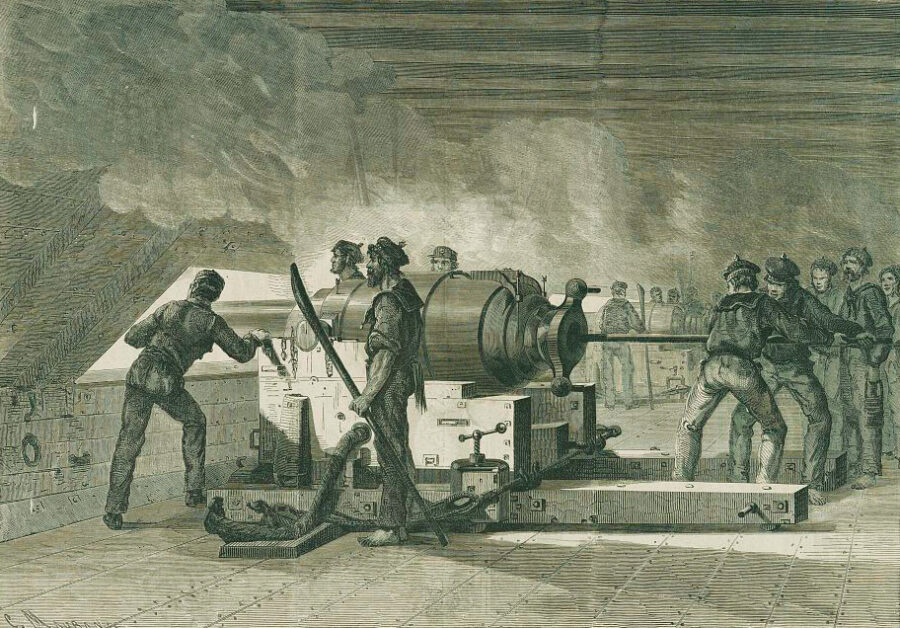
This print, published during the war in the French publication Le Monde Illustre, shows Confederate sailors aboard CSS Virginia loading and firing their guns during the fight with USS Monitor.
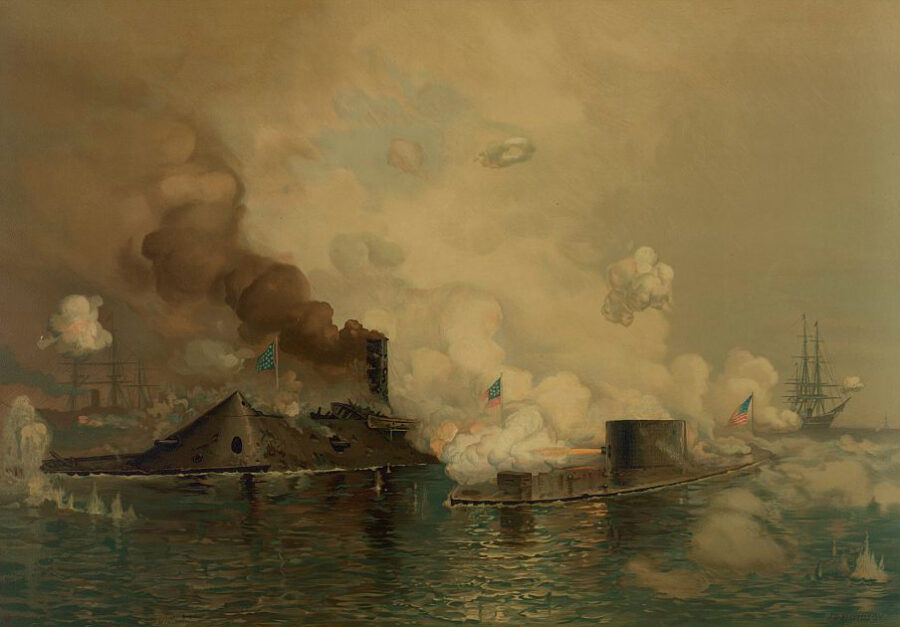
J.O. Davidson’s work, “The Monitor and Merrimac: The First Fight Between Ironclads,” was published in 1886 by L. Prang & Co. of Boston.

Kurz & Allison’s 1889 lithograph “Battle Between the Monitor and Merrimac” focuses more attention on a dramatized depiction of Union activity on the shore than it does the clash between the ironclads, depicted in the distance at center.

“Battle of Monitor and Merrimac,” the simply titled print by Cosack & Co., was published in July 1889.
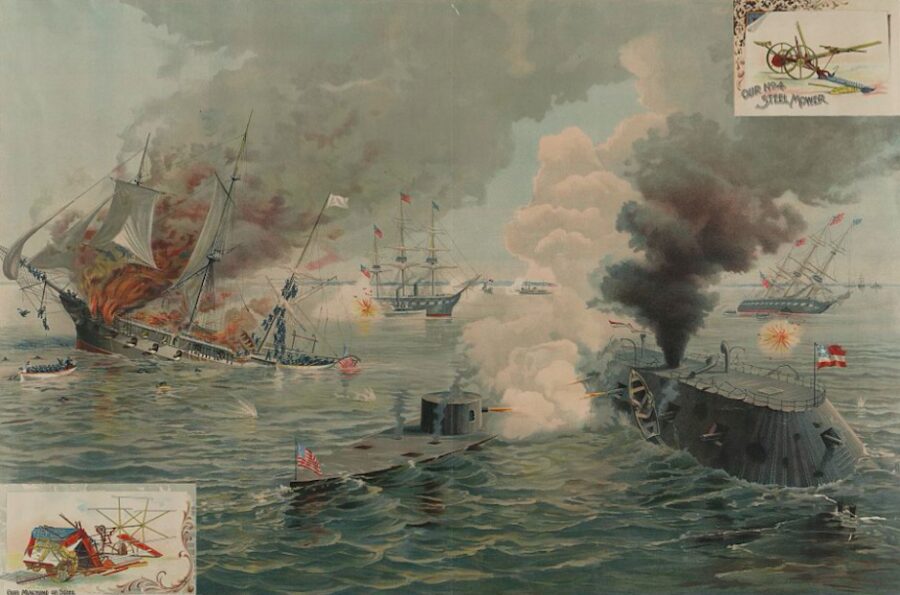
The McCormick Harvesting Machine Company of Chicago was behind the production of this 1891 lithograph of the Battle of Hampton Roads, which was copied by permission from the cyclorama depicting the clash between Monitor and Virginia then on exhibition at Toledo, Ohio. The company included the following self-promotional line at the bottom of the print: “This fight settled the fate of the ‘wooden walls’ of the world and taught all nations that the War-Ship of the future must be like the McCormick Harvester—a machine of steel.”
Related topics: naval warfare

